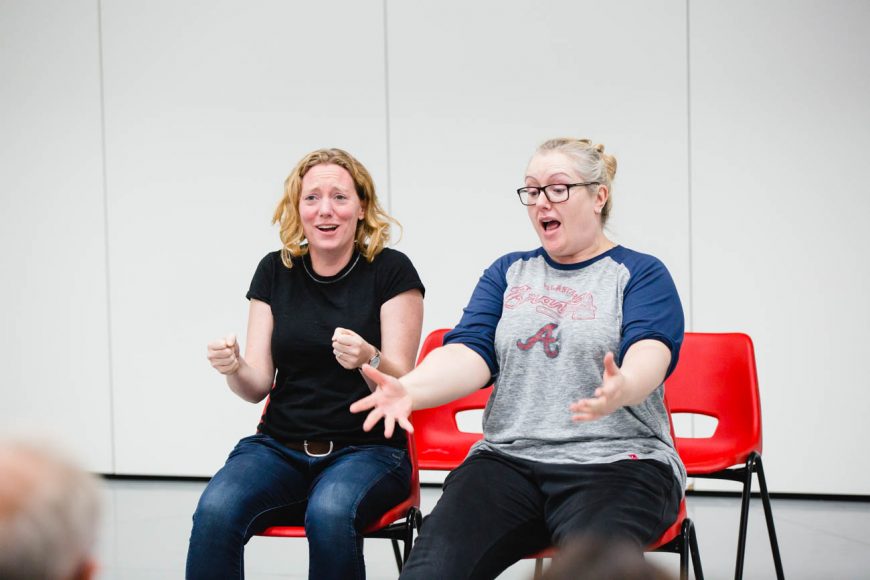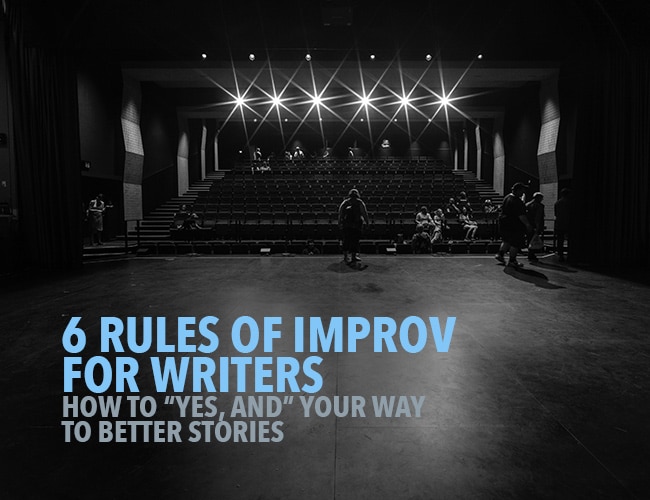Acting, as a craft, encompasses a wide range of techniques and styles, but two prominent methods stand out: improvisational acting, commonly known as improv, and scripted acting. Both forms offer unique approaches to storytelling and performance, requiring different skills and mentalities from actors. While scripted acting provides structure and clear direction through a predetermined script, improv embraces spontaneity and the unexpected, pushing actors to create in the moment. Understanding how improv differs from scripted acting is essential for aspiring actors, directors, and even audiences who want to appreciate the diverse ways stories can be brought to life on stage or screen.
Improv, short for improvisational acting, is a form of performance where actors create scenes, dialogue, and actions in the moment, without a script or predetermined plan. The essence of improv lies in its unpredictability and flexibility. Performers must think on their feet, responding to fellow actors and their environment in real time, often leading to surprising, humorous, or deeply emotional outcomes.
Origins and Development: Improv has roots in ancient theatrical traditions, but its modern form developed in the 20th century. Key figures like Viola Spolin in the U.S. and Keith Johnstone in the U.K. formalized improv techniques, particularly for comedy and theater. The rise of improv comedy groups, such as The Second City in Chicago and the Groundlings in Los Angeles, popularized improv in mainstream media. Today, it’s a vital tool for actors in both comedic and dramatic performances, and is frequently used in drama schools and workshops.
Key Elements of Improv:
- Spontaneity – Actors have no script, so they must react instinctively to the situation.
- Creativity – Improv requires a high level of imagination to invent scenarios, dialogue, and character motivations on the fly.
- Collaboration – Since improv is often ensemble-based, actors must rely heavily on teamwork, creating a scene together rather than dominating it individually.
- Adaptability – Flexibility is essential, as scenes can change direction instantly based on the choices of fellow actors or audience input.
- Humor and Drama – While improv is often associated with comedy, it can also produce deeply dramatic or emotional scenes, depending on the actors’ approach.
Types of Improv:
- Short-Form Improv: Typically used in comedy clubs or TV shows like Whose Line Is It Anyway?, short-form improv involves brief, game-like scenes based on audience suggestions. These are quick, punchy, and usually comedic in nature.
- Long-Form Improv: Longer, narrative-driven performances that can last for 20 minutes or more, such as those seen in improv theaters like Upright Citizens Brigade. In long-form improv, actors create an entire storyline or multiple interconnected scenes without pre-planning.
The challenge and beauty of improv lie in its unpredictability. Every performance is a fresh experience, both for the actor and the audience, making it a dynamic and often thrilling form of acting.
What Is Scripted Acting?
Scripted acting, in contrast to improv, involves following a written script that outlines the dialogue, actions, and emotions the actors must convey. The actor’s job is to bring a character to life by interpreting the script, which provides structure, guidance, and a clear vision for the performance. Scripted acting is what most people are familiar with from watching movies, TV shows, and traditional theater.
Script as the Backbone: In scripted acting, the script serves as the foundation of the performance. Every line, pause, and stage direction is meticulously crafted by the writer and carefully executed by the actor. While actors may still bring their creativity to the role, they are working within the boundaries set by the text. This requires a different type of discipline and attention to detail compared to improv.
Key Elements of Scripted Acting:
- Memorization – Actors must memorize not just lines but also stage directions and cues from fellow actors.
- Character Development – Unlike improv, where characters are often created in the moment, scripted acting allows actors to spend time developing their character’s backstory, motivations, and emotional arc.
- Rehearsals – Extensive rehearsals are common in scripted acting, allowing actors to perfect their timing, delivery, and movements. This repeated practice leads to a polished and consistent performance.
- Director’s Vision – In scripted acting, the director plays a significant role in shaping the performance, offering guidance and ensuring that the actor’s portrayal aligns with the overall vision of the production.
Examples of Scripted Acting: Virtually all mainstream films and television shows follow scripted formats. Classic stage productions, such as Shakespearean plays, are another prime example of scripted acting. While actors may bring their own interpretations to the role, the words, structure, and often the staging are predefined.
In a scripted performance, the goal is precision. Every word has a purpose, and the actor’s role is to convey that purpose as effectively and emotionally as possible. This requires not only a deep understanding of the script but also the technical skill to deliver a performance that feels natural, despite the structure and repetition involved.

Differences Between Improv and Scripted Acting
Though both improv and scripted acting aim to bring stories and characters to life, the way they achieve this is fundamentally different. The key differences lie in spontaneity, structure, preparation, creativity, and how actors interact with their surroundings and fellow performers. These differences affect not only how actors approach their roles but also the audience’s experience of the performance.
Spontaneity vs. Structure
Improv’s Spontaneity:
In improv, spontaneity is the core of the performance. Actors have no predetermined lines or directions, which means every choice they make is a response to what is happening in the moment. The scene could take any direction based on the actors’ quick thinking and their ability to adapt to unexpected developments. This makes improv highly dynamic and unpredictable. Since no two improv performances are the same, audiences are treated to a one-of-a-kind experience each time. Actors need to trust their instincts, take risks, and fully embrace the uncertainty that comes with improv.
Scripted Acting’s Structure:
In contrast, scripted acting is highly structured. Every word and action has been predetermined by the script, leaving little room for spontaneous decision-making. The goal is to follow the script closely and deliver a performance that aligns with the vision of the writer and director. While actors still bring creativity to their role, they are doing so within the confines of a set text and direction. The structure provides predictability, which allows actors to refine their performance over multiple rehearsals, ensuring consistency in their portrayal.
Preparation and Rehearsal
Improv’s Minimal Preparation:
Improv performances require little to no preparation in the traditional sense. While actors may train extensively in improvisation techniques, each performance itself is unrehearsed. The actors might have a basic prompt or a loose scenario to guide them, but they do not know how the scene will unfold. This lack of preparation can lead to exhilarating moments of creativity but also presents the challenge of maintaining coherence in the performance. Improvisers often rely on their instincts and experience, as well as a strong ability to listen and react to their fellow actors.
Scripted Acting’s Intensive Rehearsal:
Scripted acting, on the other hand, involves a great deal of preparation. Actors spend hours memorizing lines, studying their characters, and rehearsing their scenes. Rehearsals allow actors to perfect their timing, blocking (movement on stage), and delivery of lines. Directors provide feedback during rehearsals, helping the actors refine their performances and ensuring that every aspect aligns with the overall vision. This intensive preparation leads to a polished, consistent performance that is delivered in the same way each time, allowing for a more predictable and controlled outcome.
Creativity and Flexibility
Improv’s Creativity:
Improv acting places a heavy emphasis on creativity. Since there is no script, actors must constantly create dialogue, actions, and character choices on the spot. The freedom to invent allows for a level of creativity that is unparalleled in scripted performances. Improv encourages actors to push boundaries and explore new ideas without the constraints of a predetermined story. The result can be unexpected, funny, or emotionally moving moments that arise naturally in the moment.
Scripted Acting’s Precision:
Scripted acting, while still requiring creativity, demands a different type of precision. The actor’s creativity lies in how they interpret the script and bring the character to life within the defined boundaries of the text. Creativity in scripted acting is more about depth—exploring the nuances of the character, their motivations, and their emotions—rather than inventing new scenarios or dialogue. The focus is on delivering a specific, consistent performance that aligns with the director’s vision.
Audience Interaction and Feedback
Improv’s Immediate Audience Response:
One of the unique aspects of improv is the direct interaction between the actors and the audience. Since the performance is unscripted, actors can respond to audience reactions in real-time, often adjusting their delivery or direction based on the feedback they receive. In comedy improv, for example, an actor might play up a particular joke or character if it gets a strong reaction from the audience. This level of interaction makes the audience feel more engaged and a part of the performance, blurring the line between performer and observer.
Scripted Acting’s Controlled Interaction:
In scripted acting, audience interaction is much more controlled. While the audience’s response may affect an actor’s energy or emotional delivery, it does not influence the actual content of the performance. Scripted acting follows a fixed path, and deviations are rare, especially in formal productions like theater, film, or television. The actor’s focus is on delivering a consistent performance, regardless of how the audience reacts, making the interaction more indirect.
Role of Directors
Improv’s Collaborative Nature:
Improv acting typically involves minimal direction. While some improv shows or performances may have a loose structure or prompt provided by a director, much of the control is in the hands of the actors. The actors work collaboratively to build the scene, responding to each other and creating the narrative as they go. This decentralized approach means that actors have more creative freedom, but it also requires a high level of trust and cooperation among the cast members to ensure the performance remains coherent and engaging.
Scripted Acting’s Directorial Control:
In scripted acting, the director plays a central role in shaping the performance. Directors provide guidance on how the script should be interpreted, offering feedback on the actors’ portrayal of their characters, their timing, and their movements. Directors often have a clear vision for how they want the final performance to look and feel, and they work closely with actors to bring that vision to life. This gives the director more control over the performance, ensuring that it aligns with the intended narrative and emotional tone.
These differences between improv and scripted acting highlight the unique challenges and rewards of each form. While improv offers freedom and spontaneity, scripted acting provides structure and consistency. Both forms require a different set of skills and approaches, but they ultimately serve the same purpose: to tell a story and engage the audience.